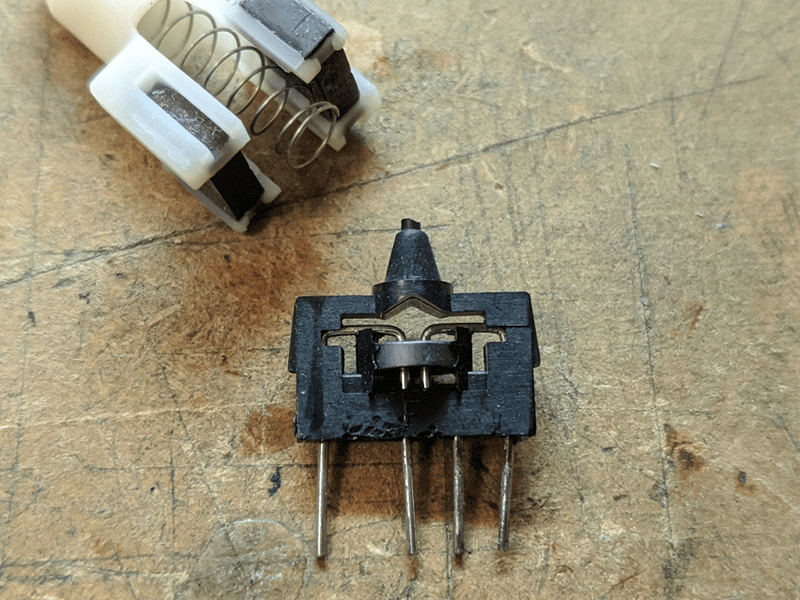We don’t know why [TubeTime] decided to show off this oddball keyboard switch as a series of Twitter posts, but we were glad to see them somewhere. At first, the switch looks pretty conventional. But as the pictures reveal the insides, you’ll notice something unusual: a ferrite toroid! These switches operate as a transformer and are known as magnetic valve switches.
The switches have two sets of two pins — one set for the primary and one for the secondary of the transformer wound around the ferrite core. That transformer remains stationary, but a pair of permanent magnets move. When the key is up, the magnets are close to the core and cause the transformer to saturate, so there is little or no output at the secondary. When you depress the key, the magnet moves away from the core, allowing the signal to pass through the transformer. What that means is there is no mechanical contact, which is good for switch life. It is also important in environments where a small spark could cause an explosion. You can watch a video about a keyboard that used those switches, below.
Sometimes known as Cortron switches, they appeared as a patent in 1974. While they did find use in quite a few products — especially those where a mechanical switch was undesirable, hall effect switches became more economical to produce and drove the magnetic valve switches out of the market by 2005.
Surprisingly, this is one of those rare topics where an Internet search only turns up a handful of pages. There’s a brief mention of their history on a keyboard site (that also has an interesting discussion about interfacing). We also found some information about where they turned up on this page. Those, along with a few stray discussion posts and the patents, seemed to be about it.
Oddly, this isn’t the first time we’ve seen transformers in a keyboard, although not quite used in the same way. If your transformer theory is rusty, we have just the video for you.















The Nascom 1 (and 2) British home computer kits from the late 1970s used Licon keyboards which had pulse transformer key switches. The keyboard cost £30 and the whole kit cost just under £200 less power supply, a considerable amount back then. I seem to remember that Licon claimed a mechanical operational life of a million operations and unlimited electrical life.
In today’s prices, the keyboard would be around £150, and the kit around £1100…
I’ve still got my home built Nascom 2,, day inside an old cash register case
Thats weird.My nascom 2 sits in an okld PET case. The original PET in ards wer removed to put in a cash register bas`ck in 1980!
The track layout on the back of the Licon keyboard was carefully designed to minimize radiation. The driven (primary) turn tracks were run close and parallel, as much as possible.
Seems like a sort of combination magnetic amplifier and LVDT reduced to one bit. Neat.
As the cutaway photo shows, this transformer keyswitch has
“more than meets the eyes”.
(groan!)
I worked at ITW when the switch was designed and manufactured. It had a actuation life in excess of 100,000 cycles. All our keyboards used the switch. One loop was for the drive pulse , the other was the sense loop. The magnet saturated the core which turned the switch off. Depressing the switch took the core out of saturation allowing the signal to couple through. The advantage no switch bounce and very inexpensive to manufacture.
No switch bounce, I wish the article had mentioned that…
Is there any particular advantage over capacitive switches? My Model F has those and it’s about the same deal; virtually infinite electrical cycle life, very high mechanical life, no switch bounce. Seems a lot easier to manufacture, too.
This is a similar principal to the fluxgate compass / magnetometer . relying on magnetic saturation of the ferrite core.